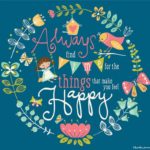Today on the blog we have a dose of inspiration for you, with a book review by Susan Niner Janes about the magical world of pop-up books.

The Art of Pop-Up
The Magical World of Three-Dimensional Books
By Jean-Charles Trebbi
Promopress 2012, reprint 2014
Hardcover £24.99
Amazon link here
ISBN 978-84-92810-65-9
Star rating: *****
“It is estimated that today there are no more than a hundred or so paper engineers in the world…”
– Jean Charles Trebbi
Whether you dream about joining the hallowed ranks, or if you are simply a papercraft connoisseur, The Art of Pop-Up is an essential read.
This awesome title is a lovingly curated pictorial history and appreciation of the pop-up book, its masterminds and creators. That description sells this wondrous title short, because although the main focus is on the movable book, just about every imaginable type of paper engineering mechanism and curiosity is featured, going way beyond the book: sliceforms, action origami, origamic architecture, flip books, tunnel books, carousel books, mix and match, and much more. The author says that the book is not exhaustive, but it certainly packs an amazing amount of info about interactive papercrafts within its covers.
The book is, appropriately, bookended with two superb paper-engineered features. Up front is a pullout double-sided paper engineering Timeline Fold-Out. Back-of-book there’s a Techniques Guide featuring pop-up book mechanisms and bindings. So as not to disappoint, both are fancy-folded. These excellent resources amount to crib sheets for aspiring paper engineers.
The book begins with an introduction to movable books, followed by a concise (but still lavishly-illustrated) history. There are plenty of fascinating historical details. To whet your appetite (without providing too many spoilers): instructional movable books, featuring volvelles, rotating wheels which revealed info, were used by Renaissance scholars. Pop-up books for entertainment and for children were introduced in the 18th century. And, of course, the Industrial Revolution (and less expensive paper) in the 19th century brought with it a golden age of paper-engineered book innovation.
Next up is the Techniques section, which spotlights paper engineering pioneers – those who masterminded the concepts, then moves on to specific pop-up variations and their practitioners. When a mechanism is shown, there are often accompanying schematic diagrams for your edification and enlightenment, a very handy feature. Example: the birds-eye view of the carousel book.
Themes and Collections – this sub-section is a capsule tour of the world’s pop-up resources, with internet links to follow up on. The next sub-section is a spotlight on Paper Engineers: designer profiles (meet the makers, their work, and what makes them tick). Here are the big names: Robert Sabuda, Jennie Maizels (creator of the amazing Pop-Up London), and many more.
The Beyond Pop-Up section is about “thinking outside the book”, you might say. This part explores the frontiers of pop-up, such as bigging up the concept for theatrical sets and home furnishings. There’s a look-in on digital developments (this is not in the book, but currently topical – Rob Ryan has a new interactive digital iBook). There are also related ideas, such as incorporating smell and/or textures. The sub-section on book restoration is commendable. This is a topic rarely discussed in paper pop-up how-to books, yet, paper being what is – relatively fragile and ephemeral – is of prime importance. Valuable tips are included on how to craft archival-quality projects, and also on how to repair and clean mechanisms. The sub-section on Courses casts an eye on paper-related educational opportunities worldwide (a look-in at some interesting programmes).
Lastly Models: photocopiable models you can try at home (there are no sacrilegious “cut up this book” commands to be found here!). Fun, challenging stuff, as you would expect. There’s origamic architecture, a one-piece tunnel book, a volvelle disc, a cat-themed sliceform, and a Lotus pop-up. All are contributed by experts in their niche areas. You will learn by doing.
This is a large-format book, with quality production values. The playful and sympathetic graphic design contributes to its celebratory mood.
The author, Jean-Charles Trebbi, an architect and designer himself, says that the intent of his book “was to pay tribute and give a voice to” a little-known profession , paper engineers, ”whose craft combines the technical expertise of cutting and folding with producing ingenious creations.” He has achieved his aim. This book is an ideas mother lode, with international scope. It examines the past and imagines the (sometimes digital) future of paper engineering.
This is a book to dip into time and again – a go-to resource and inspiration.
***
 Susan Niner Janes is a craft designer, author, and blogger.
Susan Niner Janes is a craft designer, author, and blogger.
She has designed over 30 papercraft templates for Hot Off the Press, as well as the Petal Pairs range of punches for Tonic Studios.
Connect with Susan here: Website














Leave a Reply
You must be logged in to post a comment.